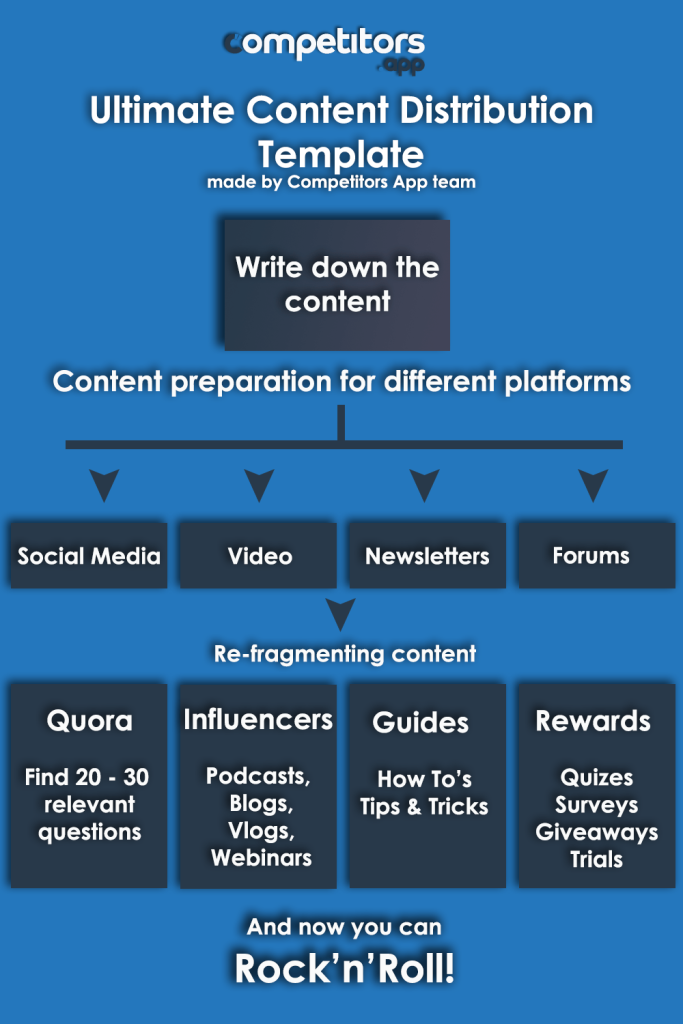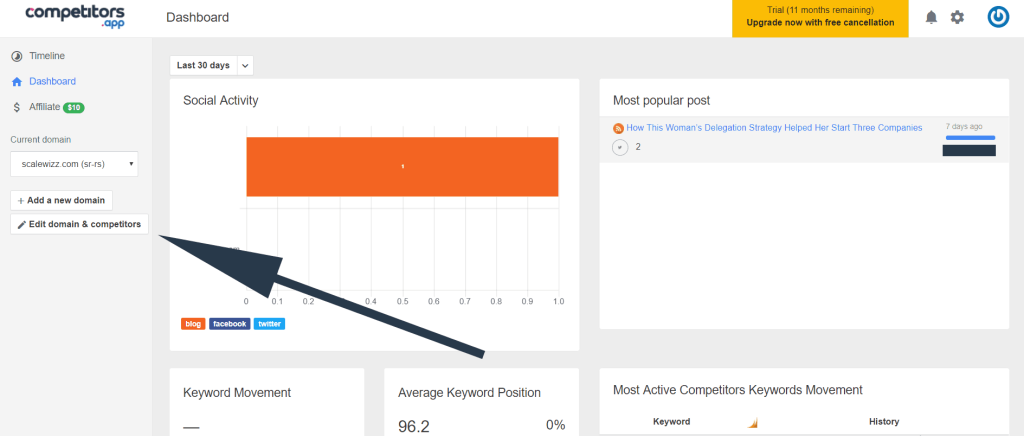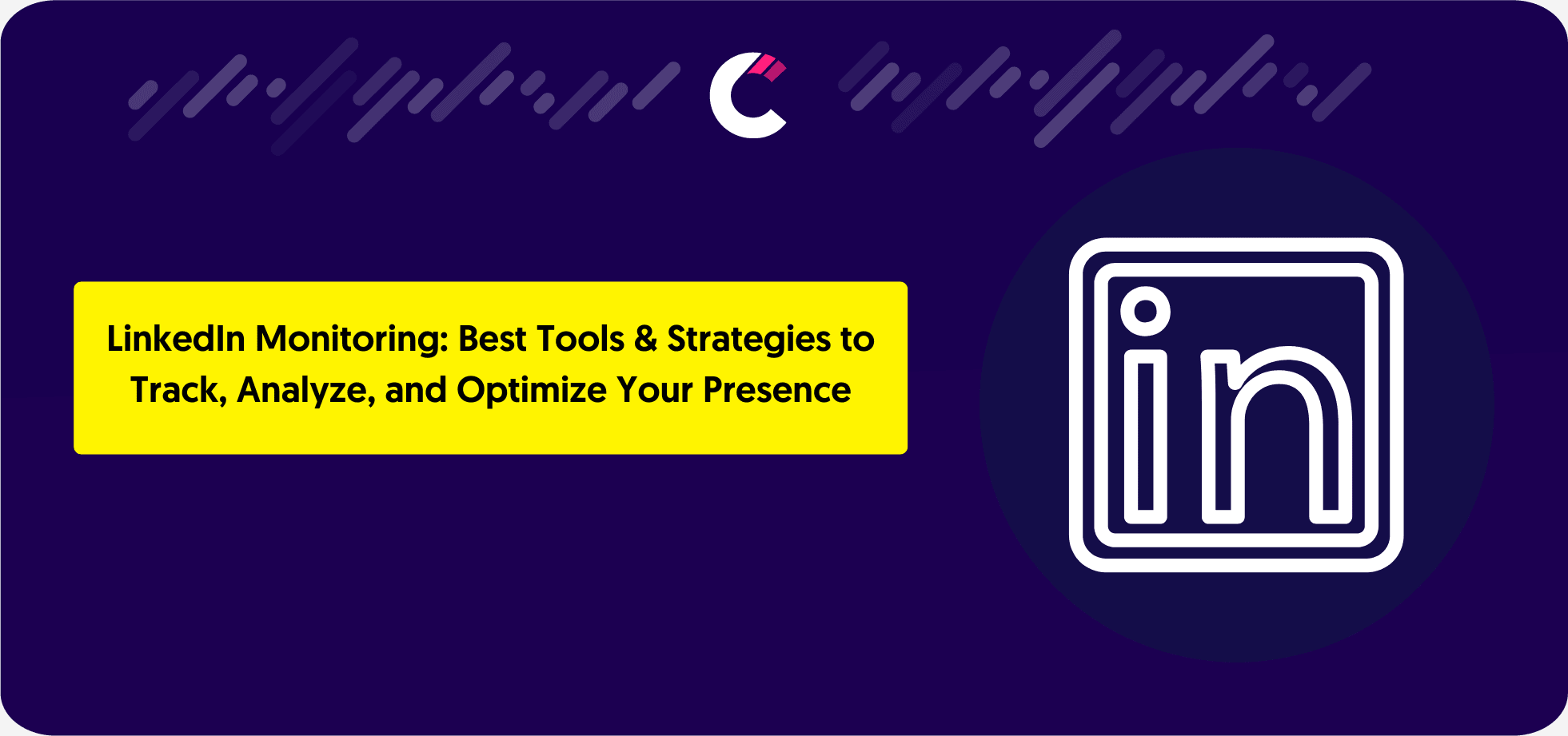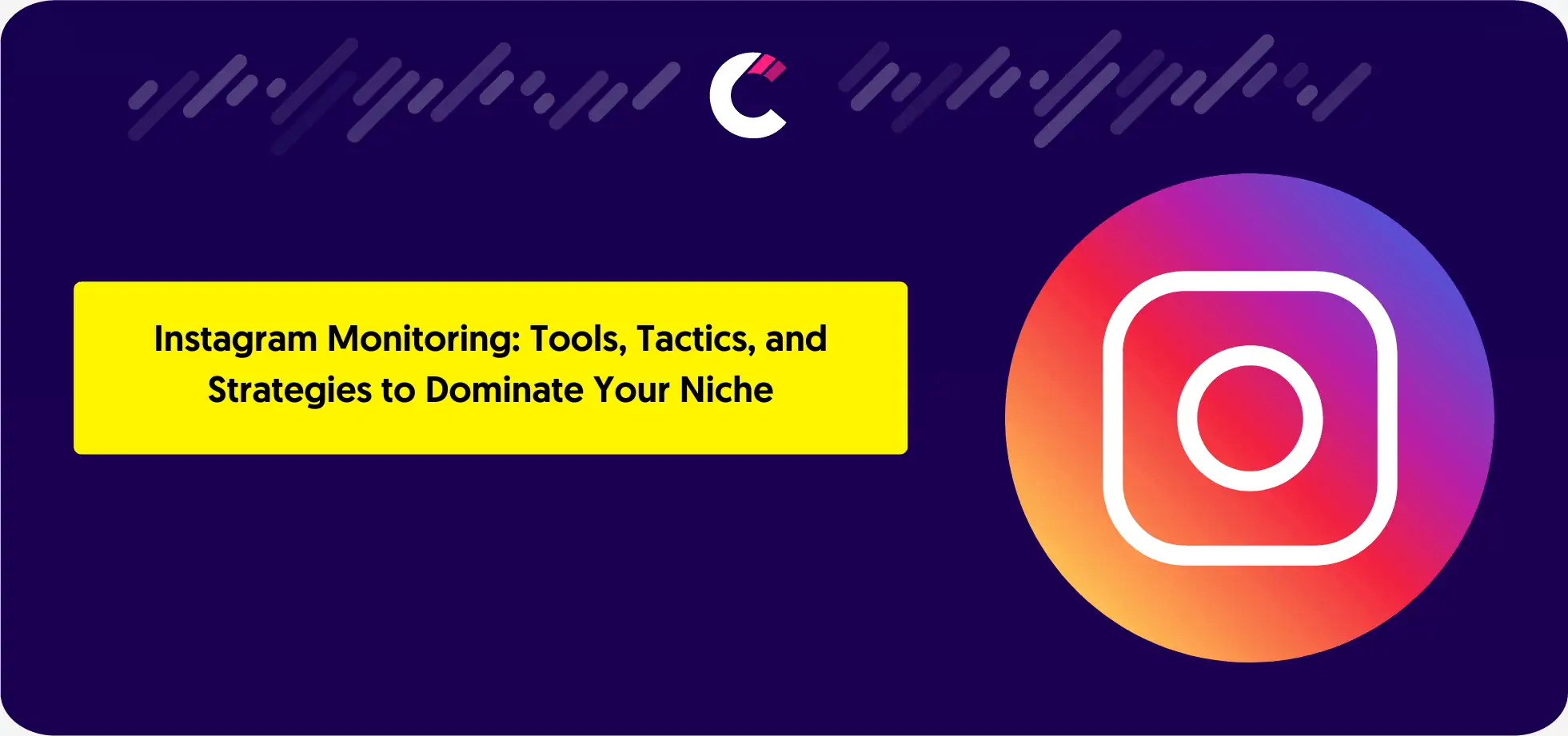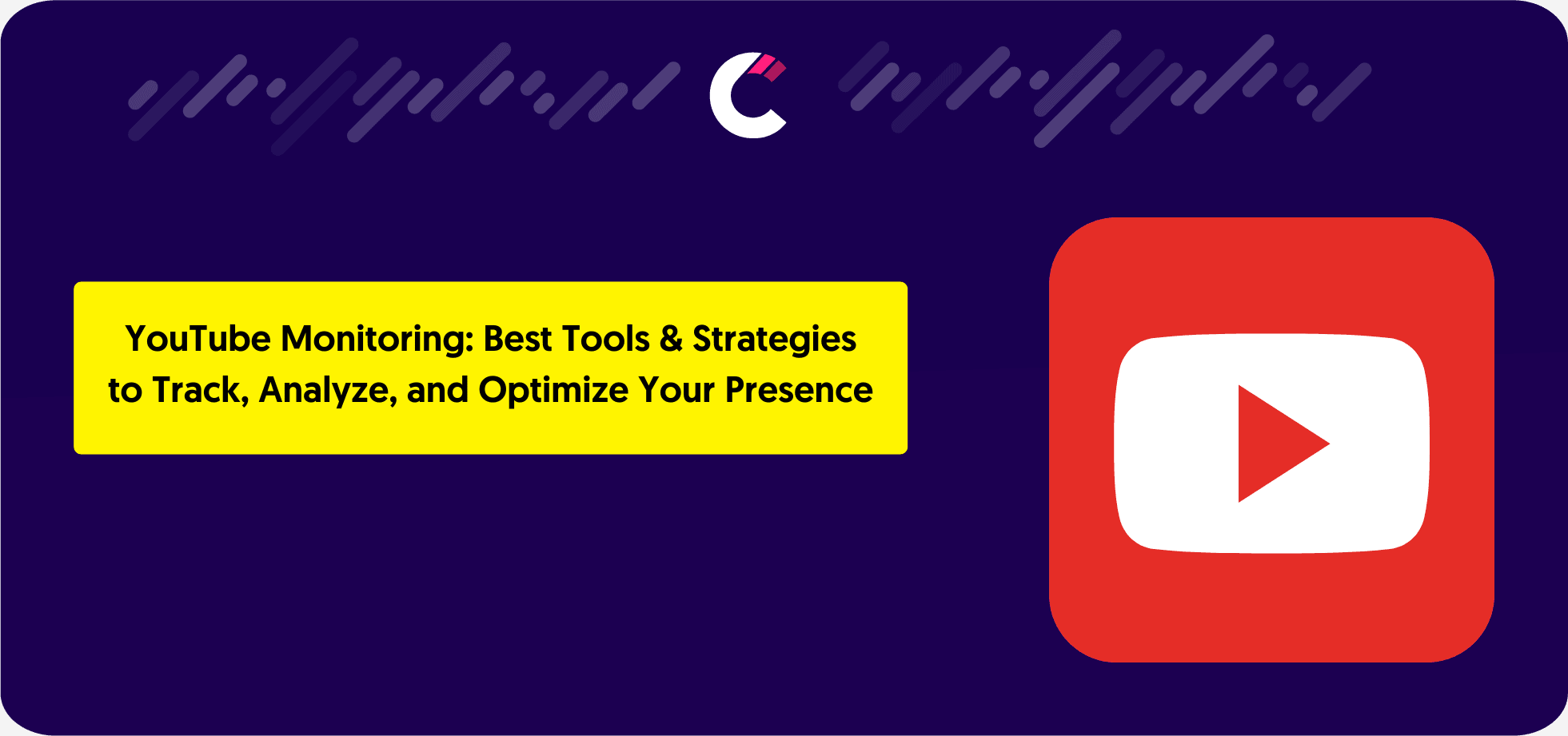The 13 minutes you will spend reading this will probably be the best investment you have made today! Why? Because you will learn how to compete and beat your competition, be better than them and scale your business!
A few weeks before I started writing this article, I had reached out to Gerard Compte from „FindThatLead“to make a better business relationship with him. In the first message I had written in the P.S. section, I said:
“Good Luck in slaying your mortal enemies Gerard! ;)”
When he responded, I learned a precious lesson from reading the first sentence of the message:
“There are no enemies; just good people called competitors who are helping us to understand our market and customers better. Competition is the best thing you will have in business.”
This sentence is mind-blowing!
When I thought it through, I didn’t have another option but to agree with that.
In this article, you will learn:
- Why the best product on the market doesn’t always win
- What you need to have to be respected among the customers
- How to beat your competition and create competitive strategies
- How to learn good and bad decisions and moves from your competition
- How to copy your competitors and deliver their plans better on the market.
How customers make a decision about you or your competitors?
Which brand will they follow and admire more in a conflict?
We all have our favorites. For example:
- I picked Google over Yahoo
- Google docs instead of the Microsoft office
- FindThatLead for prospecting over UpLead or Hunter.io
- Even Mailshake and Autoklose instead of MailChimp.
Subconsciously, not just because they have better products. There are many more reasons why we have our favorite brands, which hardly anyone of us ever noticed.
Honestly, how often have you seen an entirely new product on the market? It’s sporadic. Probably, the last unicorn entering a “blue ocean” we saw is Airbnb.
Whether you are starting a new business or a new product in your company, you will undoubtedly have some competitors. It’s always a tough battle
Let me tell you a little story about one of the biggest companies today. How they started and how they won the battle against the company that had many more customers and almost the same product.
Competitors Example: Facebook vs. MySpace
We all watched that film where Mark Zuckerberg wrote that fantastic piece of formula on the window. But honestly, why did Facebook win the battle against MySpace, even if they had a similar software?
MySpace probably had better software at the time, It is much older than Facebook, but Facebook had a better story and mission.
MySpace introduced to people the World of Social Media, but Facebook truly connected them among themselves.
Facebook had a better amplification and product distribution covered with its primary mission: to connect people from various parts of the world.
The best product doesn’t always win. The best amplification, distribution, and the stories of our brand that we’re publishing win in most cases.
Great content with amazing distribution is what differs a reliable brand and product from bad one
People tend to persuade you and convince you that you must write content every day, that you must provide value and other irrelevant things.
Yes, you must, but it’s just not enough to write it down or record it.
You’ve probably realized that best content marketers write less content than other people. Why? Because they have a good preparation and distribution of the content itself.
One article with great distribution is worth more than seven articles with poor distribution.
This is a golden rule.
In a short period, you will get bigger traffic and better results.
We have created an infographic picture of content distribution for you:
One piece of Content can be used in different ways. Writing content doesn’t only mean publishing it on your blog. It also means publishing it on your Social Media and distributing on other platforms like Quora, Reddit, Medium, etc.
Also, one content can be re-fragmented into different types of smaller stories, how-to’s, surveys, playbooks, exclusive offers, etc.
You can play with it however you want.
Your customers want you to take care of them; if not, they will go to your competitors
Be real for a second. How much do you love it when your favorite companies take care of you? When they reach out and ask you:
“Hi Ben, how are you going these days? Did you knew that when you track your competitors, your chances for beating them are 86% more likely?”
or
“Hi Ben, here is our ultimate Competitor Analysis Spreadsheet to help you find your competitors better?”
Or, when they have exceptional customer support, which is solving your problems in a matter of minutes, instead of waiting two or three days.
Your customers appreciate it when you take care of them. It gives them a feeling that they are just as important to you. Slowly, you will become their friend.
Let me tell you a story about one of the fastest growing online communities on the Internet.
When Josh started building Badass Marketing and Founders, he had zero members. Several months later, the community reached 20.000 members who love BAMF and engage with their content every single day.
So, what’s the secret sauce?
Josh and his BAMF team cared about us. They were creating interesting content, solving our problems, detailed guides with videos about how to get things done, and they gave us their full support.
It’s remarkably simple!
So, here’s the tip.
Be the most loyal and reliable „friend“ to your potential customers. Show them with material evidence that you are better than your competitors.
You can do this in a few steps:
-
- Identify the biggest problem of your target audience and find the solution.
-
- Convert solution to one immeasurable piece of content
-
- Reach out to your potential customers via Social Media (Not Emails. We create real and closer relationships through Social Media channels like Facebook or LinkedIn).
-
- Offer them help
-
- Offer them help again
-
- Offer them help again and again
-
- Convert them to your trial customers.
-
- Take care of them even more
- Convert them to your paying customers.
How can you actually „spy“ on your competitors?
A lot of people find this a very problematic topic.
“Is it legal?” they ask me. Of course, it is! There’s nothing terrible about this way of observing your competition. They are your competition, and you have to learn bad and good things from them.
But how can you do this? It’s not as complicated as it seems.
First things first, before you even start monitoring and „spying“ on your competitors, you need to know who they are.
While reading this article, you probably already know who your competition is. But there are huge chances that you missed someone significant.
When my friends and I started my first business, I developed a platform that would help people find the best bars and restaurants in one place. I have never imagined that my biggest competitors are Facebook and Google.
We have spent several hours looking for similar websites. In the end, I found 10. When we have celebrated our semi-anniversary, we realized that we have at least 20 competitors more.
Lesson: If we found out this number of good and established competitors, we probably wouldn’t start our business at all. Always do your homework and research at the beginning. Later it will be too late.
A few months later – we have failed.
So, no matter if you did or did not do your competitors research before you continue with this article, read this first:
Competitive and Customer research. Why it’s so important and how to do it with no pain!
Of course, nothing is better without good old spreadsheets. 🙂
Here you can download our Ultimate Competitor Analysis Spreadsheet for free! 🙂
There are plenty of ways to „spy“ on your competitors, but what’s the best way to do that?
Indeed, you can do this in numerous ways. Here are some of them:
- Obligate your employees to follow and watch your competitors’ Social Media every day.
- Sign-up to your competitors’ newsletters
- Check your competitors’ content and Page Sources of their website to see on which keywords they are paying attention to and what content they are producing.
- Request a Demo account from Competitors App already filled with your competitors, and save 97 minutes of you and your team’s every day.
Yes, guys, it’s our software. But even if it isn’t, we are proposing you to try Competitors App. It rocks!
Knowing who your competitors are is good, but knowing what are they doing and what are their strategies is even better.
With Competitors App, you can:
- Monitor your competitors website changes
- Track their keywords and SEO campaigns
- Monitor their Social Media and PPC Campaigns
- Track Newsletters
Monitoring your competitors with Competitors App is very easy. Here is the step-by-step guide to how you can do it.
-
- Create your free 30-day trial Competitors App account here.
- Add your competitor.
After you have created your free account, on the left side of your dashboard, you will see a button called “Edit domain and competitors” (illustration below).
After you clicked there, on the up-right corner of your dashboard, you will see a button called “Add Competitor.” Click here and fill in your competitor domain.
After you have finished entering the competitor domain, click “Next” and Competitors App will find all relevant URLs of your competitor, you can monitor.
Scroll at the bottom of your dashboard, and you will see the following alert:
Click “Finish” first, and later subscribe to your competitor newsletters with the emails they mentioned in the alert.
In this way, you will start tracking their newsletter campaigns (Don’t forget to adjust this. It can be really helpful).
From the moment you add your competitors, the software will automatically start tracking them non-stop, and you can see your notifications on your timeline.
Voila! After you have finished everything, you can see your competitors’ online activity on your dashboard; it’s time to do some monitoring!
Here you can find a more detailed guide for monitoring your competitor keywords.
Now when you know what your competitors doing are, it’s time to jump on the next step
Grab your competitors’ customers attention
Here’s one quick advice:
„Spying“ on your competitors and stealing their customers isn’t illegal. Isn’t it forbidden? It’s desirable.
You already know how to „spy“ on them, monitor and track their online activity. But how can we recapture their customers?
Understand your customers better
Yea/Yes, you heard this hundred times, at least. But don’t skip on this. I’m giving you advice on how to do this.
It’s all about the customers. CUSTOMERS ARE ALWAYS RIGHT! They are your bosses. They are the ones who are in command. You need to find better ways from your competition on how to do it.
First thing first – find your customers’ biggest pains and solutions on their problems.
Research a market and do customer development. On the piece of paper, write 7 to 12 questions:
- What are your biggest troubles about the [problem]?
- How often do you face this problem, and how much the solution is important for you?
- What’s your solution to the [problem]?
- Are you already using some software which helps you to solve your problem?
- Are you using [your competitors’ products], and what’s your opinion of/on them? Pros and Cons?
- What do you think about the product which will solve [your problem solution]?
- How much would you pay for it?
- Other
Mindstorm for one hour and write down all the good questions you can ask them. Select 7 to 12 best questions, which will give you consistent answers.
Now it’s time to interview the customers! 🙂
You can do it in several ways, but I will select just two of them which are the best (in my opinion):
- Interview 5 to 15 people from your competitors’ customers. If you live in a big city, try to find the best gathering places. (Do your research!).
- Create an online survey and interview 20 to 30 of your competitors’ customers.
For the surveys, here are some quick tips:
-
- For creating the surveys, offer your potential customers some rewards for completing them. It can be some content, branded spreadsheets, giveaways, your product extended trial or discount, etc. Feedier is a good software for this. Check it out!
- Make your surveys engaging and entertaining.
For the distribution of your survey – I suggest the following:
-
- Scrape your competitors’ online community members’ data and reach out to them (Send 50 to 100 messages, because you will for sure have some bounce rate).
- Find your competitors’ product on Product Hunt, AppSummo, or some other platform and message to the commentators. They are very likely (or they were) customers of your competitors (You can even find there some pros and cons their customers already mentioned).
Show to your Competitors’ Customers the “Light Side of the Force!”
Here is the truth, no matter how tedious it can be:
We need to create a real relationship with our potential customers.
If you want to be better than your competitors, then ignore almost everything you had learned before. Emails are not good for that. They are too much cold. You need to create a warmer connection with them.
Use your LinkedIn and Facebook instead.
Again, scrape your competitors’ online community members – Their names, Facebook or LinkedIn URLs and emails (they will be useful later).
Auto-connect or send friend requests to your potential customers. Make personalized messages as much as you can. Mention something you have in similar or mention the problem.
Don’t forget to offer your help (never underestimate this. It’s one of the most important things I learned in my life – Help someone for free, and it can only benefit you – with a hundred times bigger value).
Start creating and publishing relevant, engaging, and problem-solving content on your LinkedIn and Facebook, based on your research about the market and your customers’ problems.
Every one to two weeks reaches out to them with messages, and ask them:
“Hi [name],
How are you doing these days?
Since the last time we spoke together, I have done a little research about [the problem]
I hope [content name] can solve your biggest troubles!
I wish you all the best,
[Your name]”
or
“Hi [name],
I hope you are doing well!
Is there anything I can help you with?
I researched a little bit about your biggest problems with [the problem], and I think I have a solution for you! 🙂
Would you like to speak via video chat or to send you an email with detailed instructions?
Best Regards,
[your name]”
I can write you a thousand copies of your messages. But for all of them – one thing is similar:
The final goal is to create a warm relationship between you and your potential customers. Your customers should become your front-line soldiers when it comes to the battle (Or even better if you can convert them to your Jedi, it would be great!) 🙂
The most important thing is to follow up and retarget your competitors’ customers with relevant content. Show them who is the boss! 🙂
How to cr0eate killer competitive strategies
By now, you already know who your competitors are, how you can monitor them, and you know your customers very well.
But is that enough to win the fierce battle against your competition?
No, it isn’t.
We will need to develop powerful competitive strategies. Think about the following case study:
You just found a new store in your neighborhood. Only a few weeks after you started working, there it is, a brand new big supermarket only in front of your nose:
What can you do to keep your customers? What can you do to find new ones?
The process and a strategy for the IT and Tech companies are the same as for the retailer stores. For example:
You are building a SaaS tool for monitoring website backlinks. You are ready for your initial outreach. You found your potential leads with FindThatLead, and now you are prepared for sending cold emails!
You have just sent your first campaign to 1000 potential customers. But wait! Your open rate is 3%! The second campaign – your open rate is 3,5%!
You are struggling with your outreach. Now, you have a few solutions:
-
- Pay an expert with money you don’t have.
-
- You can try with a lot of “Trial-and-error” methods
- See how your competitor is doing things right.
Option 1 can be powerful but expensive. Option 2 is a good thing to do, but it’s too slow, and you will spend a lot of time figuring out what’s working and what’s not.
But, option three will save you both time and money (In the business, time and money are equally important resources).
Inside your Competitors App dashboard, you can track your competitors’ newsletter and email campaigns. They already have successful copies and templates.
Edit a template a little bit with your previous knowledge of potential customers’ behavior and problems, and you will have a good email copy ready for the outreach!
This is an example of a successful competitor monitoring and creating competitive strategies.
Here are other examples of how you can combine tracking your competitors and using their bad and good moves to outmaneuver your competition:
Make your product competitive: improve it or add features
This is a classic example of a competitive strategy. Quality is almost always better than quantity.
You have done your competitors’ customers’ research. They have filled your surveys, and now you have the valuable feedback. Use it best as you can.
For example:
Your competitor has a big customer base. It’s successful, but you found out that their customers use only two to four features instead of fifteen. Their dashboards are slow and crowded with unnecessary things.
What should you do?
Build a simple dashboard with just the features they are using.
Offer a bigger value
It’s not a secret that the company that loves and cares about its customers is always the first choice in the peoples’ eyes.
As I mentioned in the paragraph above, show them that you are thinking about them day and night. They will appreciate it.
From your customers’ survey, you know what their biggest problems are. Create content which will suit them best!
For example:
If your customers biggest problem is how to get the first clients or customers, think about the following articles:
“How to onboard your very first client.”
“How to create a successful client network.”
“10 Tips & Tricks on how to find first customers.”
Find the best places on the internet to distribute your content so that you can have a wider reach of your most ideal customers.
At the end of the article (or at the beginning), offer them some free templates, spreadsheets, or maybe outreach templates to catch their attention even more.
Be available
Customer Support is what sometimes matters the most. Be available for your customers 24/7. What most people hate is when they need to wait for the response for several hours or even days. Respond to them in minutes – literally.
Maintain your value and competitive edge.
The last step but not the least important. Always keep the same (or even better) quality of your services or your product.
Maintain your competitive edge and monitor your competitors every day, so you can find new opportunities to beat them.
In the end, let’s resume everything we went through in this article in a few short sentences:
- The best product doesn’t always win in the market.
- Define your ideal customer persona as much as you can. Find their problems and biggest troubles so that you can find the best solution.
- Monitor your competitor every day, so you can find the best opportunities for the outmaneuvering your competition.
- Create a competitive edge based on your knowledge from monitoring your competitors.
- Always maintain the same or even better value.

